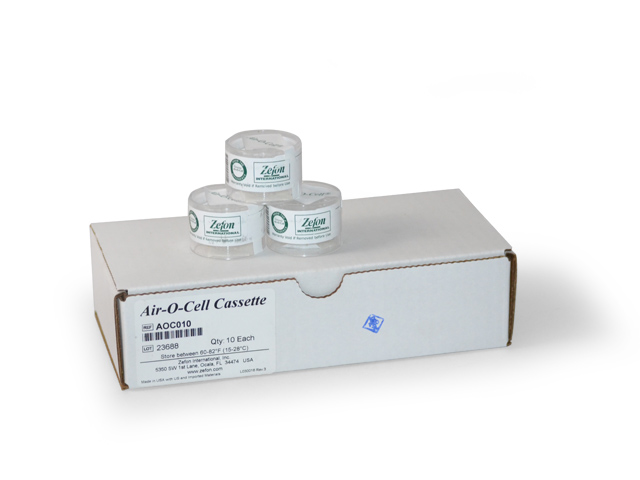Why Air Sample?
Because mold spores are invisible to the naked eye, it is sometimes advisable to apply a laboratory protocol to determine the type and extent of mold that might be present in a home or office. Air sampling is one way in which the scope and severity of a mold problem can be properly identified and analyzed. Samples are generally taken if an examination of a locale reveals either apparent mold growth or conditions that suggest mold growth is possible, such as indoor moisture or water damage to a structure or its belongings, or a musty odor that pervades the premises.
The air sampling process involves the use of a pump mechanism to force a known quantity of air through a collection device which catches the mold spores given off by a living fungus. There are several types of air sampling devices that experts use to collect spore samples.
The most common type of air sampler traps spores where they can be collected, but not allowed to germinate and grow, because no growth medium is present in the trap. This is called non-viable or non-culturable sampling. A calibrated pump draws a known volume of air and “impacts,” or forces, the sample onto a prepared microscope slide. The spores can then be identified and their quantity extrapolated per cubic meter by the lab scientist.
The second most common type of air sampling is viable, or culturable, sampling. In this type, the air sample is also impacted, but this time into a Petri dish which contains a growth medium, such as agar, which is conducive to mold growth. As the mold colony grows, usually over a period from five to ten days, it can be visually inspected with or without the aid of a microscope, in order to identify the type of mold present.
Microbial Volatile Organic Compound (MVOC) sampling analyzes the metabolic byproduct gases that molds emit when they are feeding off of a culture medium. These gases are the ones that produce the musty odors so associated with mold growth. Someone smelling these odors is actually inhaling the mold’s MVOCs.
Finally, mycotoxin testing attempts to analyze the secondary metabolic byproducts produced by fungi. These are essentially the chemicals that molds produce as weapons to destroy other fungi encroaching on the food supply. These mycotoxins tend to be the compounds that can cause disease, or even death, in humans. Samples are collected in cassettes and the mycotoxins are identified by chemical analysis.
When analyzing indoor air to determine the possible presence of mold, it is necessary to collect samples of both the indoor and outdoor air, as well. If it is determined that the relative spore concentration is greater indoors than outdoors, it can be assumed that the spores are emanating from an indoor source such as those associated with plumbing problems, a leaky roof, high humidity, or sustained water damage, for example.
Samples are generally taken near the center of the room where mold is suspected of growing, with the collection device positioned three to six feet off the ground. The time frame for collecting air samples is usually between five and ten minutes, but can be less, depending upon the amount of air movement within the sample area. Windows and doors should be closed and air conditioners and fans that exchange indoor-outdoor air should be shut off.
Air Sampling – Critics and Proponents
It should be understood that air sampling is only one tool that can be utilized when inspecting a house for mold problems and is basically just a snapshot of the conditions prevalent at the exact time and place of the testing. As such, critics of the procedure contest that sample measurements of mold in the air are not always reliable because airborne spore levels can vary greatly according to several factors. In addition, air sampling cannot provide information about a site as it existed before, or after, its testing.
In fact, the Federal Government’s Centers for Disease Control and Prevention (CDC) does not recommend routine air sampling for molds because it deems it less necessary to identify the precise species and quantity of mold, as it is to ascertain whether any mold exists at all; a determination which can generally be reached by smell, surface sampling, or visual evidence.
However, proponents of air sampling argue that the process helps ensure that molds that cannot be found either visually or olfactorily can still be identified when otherwise undiscoverable. And when air samples are taken under controlled conditions by professional inspectors and then properly identified, the procedure is helpful in comparing relative particle levels between a suspected problem area and a control area. In addition, air sampling can be crucial in comparing particle levels and air quality before and after mold remediation in order to determine whether the remediation procedure was successful.
Whenever air sampling for mold is considered necessary, it should be performed by a trained professional who has experience in sampling protocols and methods, as well as the interpretation of findings. The Occupational Safety and Health Administration (OSHA) and the Environmental Protection Agency (EPA), among other organizations, have prescribed recommendations for air sampling and analysis.
[maxbutton id=”3″]

